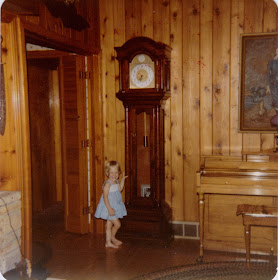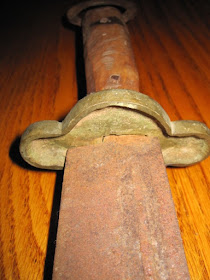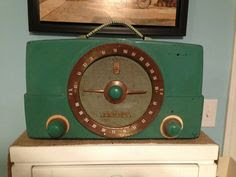A clunky scrapbook, with forty-odd pages of photographic prints pasted in in the crazy-quilt style fashionable in the 1940s, was also part of our home. We looked, and we inquired, but the answers, though kind, were brief. Yes, I was in China. We rode ponies into China and when mine went lame I found saddle sores; there was nothing I could do for my pony.
We taught the Chinese to blow up bridges. We blacked our faces, swam out at night, and attached the explosives. When a train came over carrying Japanese soldiers, we blew up the bridge.
A few bits of backstory came to our ears indirectly. From an uncle: There was hand-to-hand. From our mother: He told them he knew English, Polish, Latin, and French, so they taught him Japanese, and then they sent him to China! At the dinner table, talking with my future father-in-law: Ha! Yes, we were flown back over the Hump in late ’45 and the Japanese were still shooting up at us. From the eulogy delivered by the uncle: He jumped out of that plane snapping pictures on the way down, so the planners would have an idea of the terrain for the land invasion they had to prepare.
And we knew from our mother that in his nightmares he would cry out, Hey, Frenchie, look out! Look out, Frenchie!
Yet when we grew up and asked for details, he would just smile and say, There was a lot of running.
Dad died with his boots on, as he had frequently proclaimed he would. Mom kept his bathrobe on her pillow for a few months, then followed him. My brother and I emptied our childhood home; on clearing their closets I took up that strap as though on autopilot, silently packing it for the trip to my office where a collection of Dad-related items began to grow.
On the last day, alone in the house by the woods, alone in the empty house, my brother felt that his job was not done. Not everything was safe. Question marks still hovered in the air. Something made him climb yet again into the big, low attic, turn on the flashlight, and slowly crawl all around looking for answers.
There, jammed way under the eaves, silent and generally invisible, were two grey packages. He took them out from their waiting place. From one he drew photo logs, hand-drawn maps, and a Bronze Star citation related to OSS Detachment 202 Team JACKAL. Out of the other came an Army money belt, from which tumbled medals, ribbons, a field compass, and Chinese coins.
The entire trove is here with me now; I am partway through a proper study and have made some progress. Scanned photos reveal a lot. I figured out who Frenchie was, for which my relatives will forever be grateful. Still, the papers from under the eaves refer to events prior to and after the big mission, in the same way that the scrapbook contains no photos of the big mission, and little information beyond what is offered in the Saturday Evening Post article of March 23,1946, which is pasted right in there. He took home what they let him take home, just as he spoke only of what they let him speak. His handwritten mission journal is in Box 862 of something called “OSS Personnel Files – RG 226 Entry 224” in an OSS/CIA stronghold – maybe the Hoover. Some day I would like to hold that journal in my hands.
The strap is the sling from his M1. The earliest photo of his rifle is from A.S.T.P. training at the University of Chicago.
By the time he shipped out, he had been training with this rifle for a year and a half. As far as I can tell, the rifle is a version of a
.30 Caliber M1 carbine.
Its next photographic appearance is somewhere near Kunming, where his buddy snapped a shot of Gene demonstrating how the OSS looks for bad guys in caves.
And there we see the leather carbine sling. We see the pistol in the holster, either a US M3 fighting knife or US M4 bayonet with hilt visible behind the holster, and a magazine pouch mounted on the stock. A 15-round magazine is visible just below the sight.
A true gent named David Fletcher at
Iton’s Cave explained to me that “the vertical thing in the carbine stock is a strap well.” Further, “. . .the string arrangement under the pistol holster is a leg tie string, which was often braided if the holster was not secured to the leg at the bottom. . . There was a special method for braiding them, at least in the USA.” Thank you, David Fletcher.
The photo below of a US Army paratrooper’s kit is from the 1938 edition of Philip B. Sharp’s The Rifle in America. The paratrooper’s M1 is a little shorter than the standard rifle that ground troops would carry, according to the text. It does not look exactly the same: the strap well on the stock looks different. It is an “M11903A1.” But look, you can see very well how the strap attaches to the rifle.
A person looking through the China section of the scrapbook thus far, with almost touristic scenes of the rural area near Kunming, would conclude they were just fooling around, wasting film. Actually, they were working. From end-May through early August, 1945, they made multiple sorties north to sabotage things critical to Japanese transport, while preparing for their big mission.
George C. Chalou edited the 1992 National Archives and Records Administration’s book The Secrets War: The Office of Strategic Services in World War II.From page 95:
"Vital to Japan’s control of the Chinese interior was the mile-long bridge that crossed the Hwang-Ho (Yellow) River near Kaifeng. This double-track bridge was the thread that joined the Japanese armies of north and south China. Against all odds, Jed veterans and a brave band of Chinese guerillas under the command of Col. Frank Mills and Maj. Paul Cyr mined the great Hwang-Ho bridge. On August 9, 1945, the day Nagasaki was bombed, [in fact over the night of 8-9 August] SO Mission Jackal blew away two large spans in the bridge just as a Japanese troop train was passing over. The entire train, carrying some 2,000 Japanese soldiers, was dragged to the bottom of the Hwang-Ho."
Frank Mills, et. al., published in 2002 OSS Special Operations in China. Chapter 3 discusses the Hwang-Ho Bridges mission, relying on the mission journal. From pages 84-85, Gene:
. . . was Field Photo trained and . . . [kept] the day-by-day Team Log all the time JACKAL was in the field. Zdrojewski was young, about twenty I guess, [he was 22] but he had been parachute-trained in Kunming and I believe this was his first combat assignment. He was impressionable and his language in the Team Log reveals thoughts that most of us had but never expressed . . . The Team Log was always guarded and placed in a separate container with incendiary grenades that could be ignited immediately if capture was imminent . . .I don’t know of any other operational teams in China that kept a log with this detail. The standard issue blue-lined paper from letter-size writing pads is now getting yellow and ragged with age, but Zdrojewski’s handwritten entries in pencil script are clear.I can picture him, sitting in one of the mud huts or in the rooms they had later in the walled compounds, writing down the day’s events as they unfolded during the months to follow, probably just before climbing into his sleeping bag to grab a little sleep with his.45 pistol and grenades by his side and a lantern or candle or an Army issue flashlight lighting up the scene."
The trove waits for me to resume study, as it had to be set aside for a while. But now I can start again. And I have been keeping that strap oiled.
To the right of his shirts, hard by his tie rack, directly above the shoeshine kit, Gene’s rifle strap was never farther than 12 feet from his hand, every night since he came home in 1946.
(An earlier version of this photoessay appeared on the Member Feed at Ricochet.com)




































